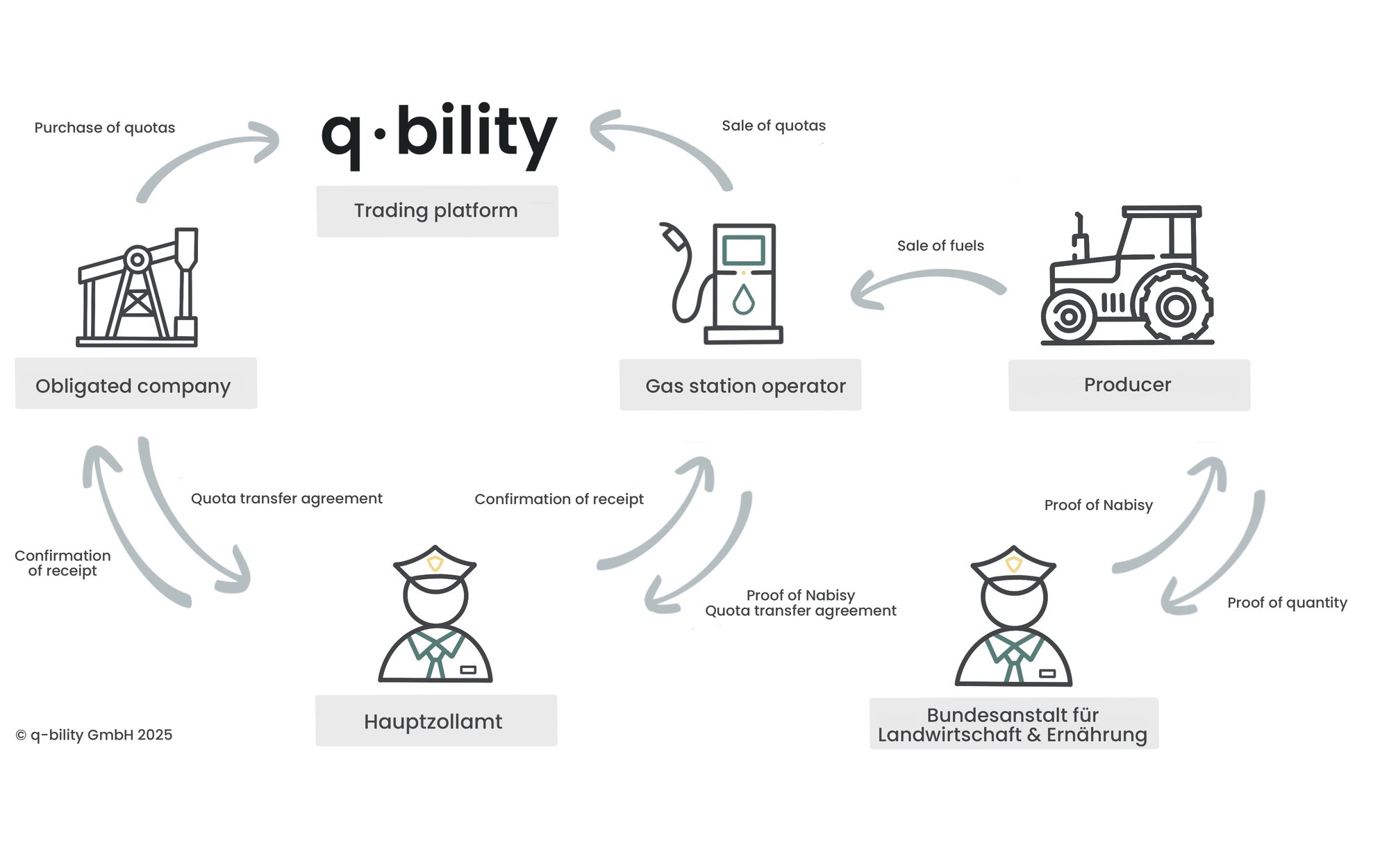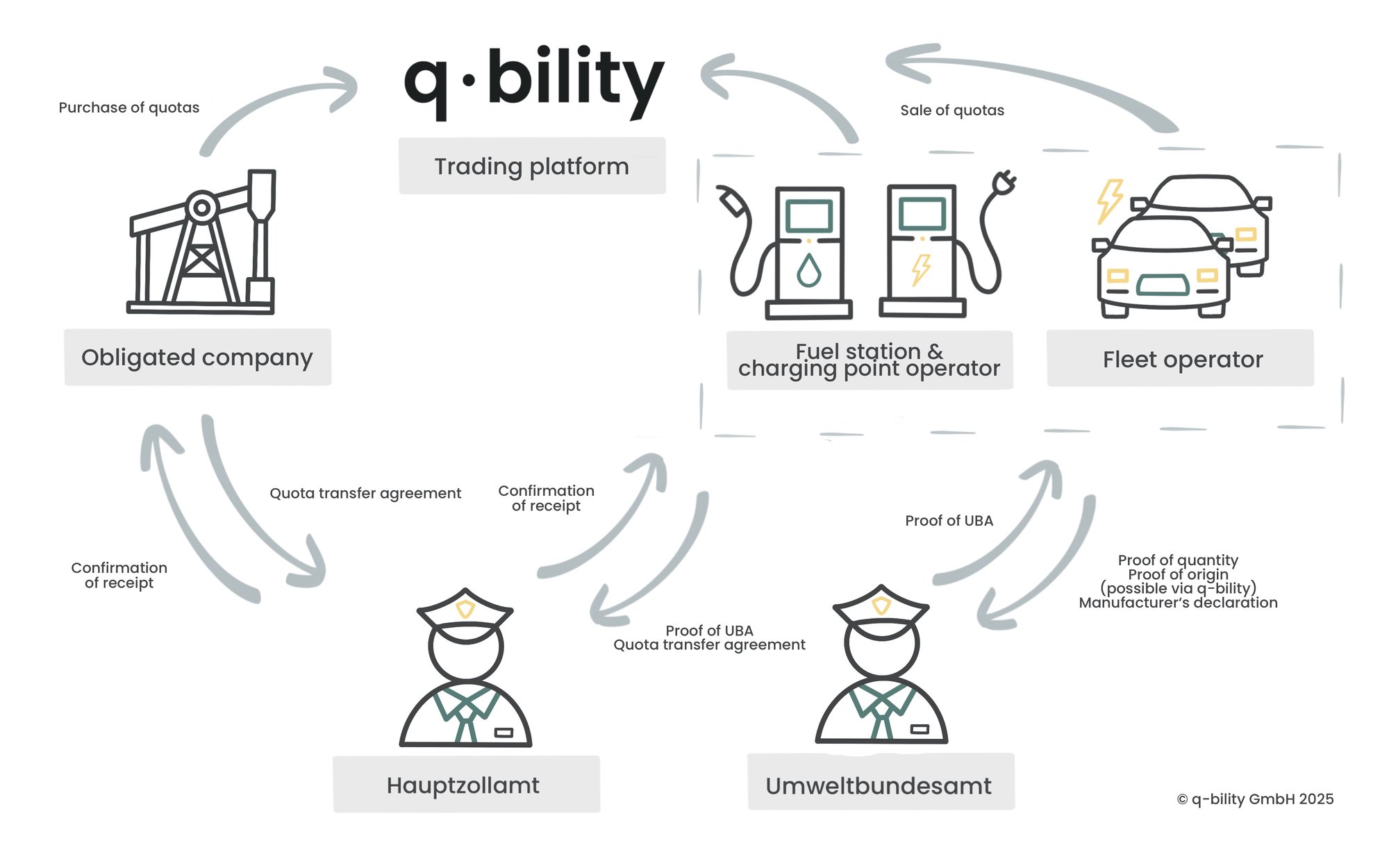GHG quota (GER)
What is the GHG quota and how does it work?
Find out how companies benefit from the greenhouse gas reduction quota and reduce emissions.
The greenhouse gas quota (GHG quota) is a legal requirement to reduce CO₂ emissions in the transport sector. Companies that put fossil fuels into circulation must offset a certain proportion of their emissions with more climate-friendly alternatives. This can be done through the use of biofuels, synthetic fuels or renewable electricity.
The GHG quota was introduced to ensure a gradual reduction in emissions. Instead of a fixed admixture of biofuels, companies must now achieve a specified greenhouse gas reduction, which promotes climate-friendly alternatives.
Further information: Federal Environment Agency
The GHG quota has its origins in the biofuel quota, which was introduced in 2007 by the Federal Immission Control Act. Originally, companies had to blend a minimum proportion of biofuels, but since 2015 the focus has been on the direct reduction of CO₂ emissions.
The legal requirements provide for a gradual increase in GHG reduction. While the reduction was initially 3.5%, it is set to rise to 25% by 2030.
Mineral oil companies must provide evidence of a fixed quota of low-emission fuels or acquire corresponding GHG certificates.
Obligated companies: Mineral oil companies, refineries, fuel importers and suppliers of alternative fuels.
Compliance options:
Use of biofuels
Use of electricity-based fuels (power-to-liquid, power-to-gas)
Offsetting electricity for electromobility
Quota trading with overfulfilment by other companies
Competent authority: The biofuel quota office at the main customs office in Frankfurt (Oder) checks compliance with the quota obligation.
|
Feature |
Primary market |
Secondary market |
|
Definition |
Direct purchase of GHG quotas from the competent authority. |
Trading of already purchased GHG quotas between companies or via trading platforms such as q-bility GmbH. |
|
Buyers |
Obligated companies (mineral oil companies, fuel suppliers). |
Companies, financial players, quota brokers. |
|
Pricing |
Regulated by legal requirements. |
Supply and demand determine the price. |
|
Place of trade |
Direct purchase via the biofuel quota office. |
Via brokers or specialized trading platforms such as q-bility GmbH. |
|
Purpose |
Fulfillment of the statutory reduction obligation. |
Flexibility in adjusting quotas or selling surplus certificates. |
|
Year |
GHG reduction obligation (%) |
|
2022 |
7,0 % |
|
2023 |
8,0 % |
|
2024 |
9,35 % |
|
2025 |
10,6 % |
|
2026 |
12,1 % |
|
2027 |
14,6 % |
|
2028 |
17,6 % |
|
2029 |
21,1 % |
|
2030 |
25,1 % |
Price development: Annual increase until 2030
Trading: Directly via the biofuel quota office, brokers or trading platforms such as q-bility
Penalties: €0.60/kg CO₂ for non-compliance
GHG quota trading for biofuels

GHG quota trading for hydrogen & electricity

FAQ
Companies can trade unused savings or sell surplus quotas.
A penalty of €0.60 per kg of CO₂ will be charged.
Fuels from sustainable sources such as residues or liquid manure, which count double towards the quota.
Biofuels, synthetic fuels, electricity from renewable sources.
Companies that sell more than 5,000 liters of fossil fuels per year are obliged to do so.
They can be carried over to the next year or sold.
Monitoring is carried out by the biofuel quota office at the main customs office in Frankfurt (Oder).
The obligation exists at least until 2030, after which it may be adjusted by the EU.
